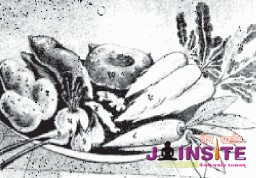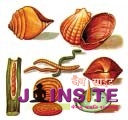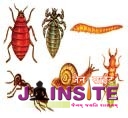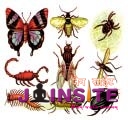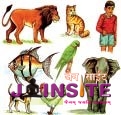Chapter 17 – Six Substances Part I – Living Beings (Jiv)
Jain Philosophy does not give credence to the theory that the God is the creator, survivor, or destroyer of the universe. On the contrary, it asserts that the universe has always existed and will always exist in exact adherence to the laws of the cosmos. There is nothing but infinity both in the past and in the future.
The universe consists of two classes of objects:
Living beings Conscious, Soul, Chetan, or Jiv
Non-living objects Unconscious, Achetan, or Ajiv
Non-living objects are further classified into five categories;
Matter Pudgal
Space Äkäsha
Medium of motion Dharmästikäya
Medium of rest Adharmästikäya
Time Käl or Samay
These six entities, five non-living and one living being, are described as aspects of reality in Jainism. They are also known as the six universal entities, or substances or realities.
These six entities of the universe are eternal but continuously undergo countless changes. During the changes nothing is lost or destroyed. Everything transform into another form.
Six Universal Substances (Shad Dravyas)
As explained above Jainism believes that the universe is made from the combination of the six universal substances. All of the six substances are indestructible, imperishable, immortal, eternal and continuously go through countless changes.
| Soul or Consciousness | Jiv | Living being | |||
| Matter | Pudgal | Nonliving being | |||
| Medium | of | motion | Dharma | Nonliving | being |
| Medium | of | rest | Adharma | Nonliving | being |
| Space | Äkäsha | Nonliving | being | ||
| Time | Käl or Samay | Nonliving | being | ||
Soul (Jiv) or Living being
Soul’s essential characteristic is consciousness. In Jainism, Jiv and soul are more or less described synonymously. When the spiritual or psychic status is described it is referred to as the soul, and when the physical structure is described, it is called Jiv.
The Jiv, which grows, decays, fluctuates, varies, eats, sleeps, awakes, acts, fears, rests, has knowledge and perception, attempts to self defend, and reproduces. These and many more qualities of the jiv are obvious through a physical body when the soul is present in it but when the soul leaves, these qualities cease. These qualities are external features and consciousness (Chetan) is the basic inner feature of the soul. This also helps us understand that the body and the soul are separate entities.
Since the soul is flexible, it pervades the entire body it occupies. For example, the same soul can occupy the body of an ant or an elephant. Such bodies stay alive as long as there is a soul. A live body, or rather, a body with a soul is described here as a Jiv.
Soul or Jiv is the only substance, which has a capacity to possess knowledge, vision, power, and bliss. It also possesses the property of contraction and expansion like that of light. There are innumerable souls in the universe. Souls cannot be created or cannot be destroyed. The total number of souls remains same in the entire universe all the time. All living beings are classified into two major categories.
- Liberated or Siddha Jiv
- Non-liberated or Sansäri Jiv.
Liberated (Siddha) Soul
Liberated souls have no karmas and therefore, they are no longer in the cycle of birth and death. They do not live among us, but reside at the uppermost part of the universe just above Siddhashilä. They are formless and their shape exist in 2/3 size of the last existence as human. They have perfect knowledge and perception, and have infinite vigor and bliss. All Siddhas are unique but they are equal in their qualities and nature. There is no difference in their status.
Worldly (Sansäri) Soul
Worldly soul is defined as a soul that is covered by karma particles. Hence its qualities are different from the liberated soul as follows:
- Limited Knowledge
- Limited Vision
- Limited Power
- Limited Bliss
- Possesses a body (plants, hellish, animal, human, or angel)
- Wanders in the cycle of life and death
- Suffers from birth, death, pain, and pleasure
- Doer of all kinds of karmas (actions)
- Enjoyer of the fruits of the karmas
- Innumerable number of worldly souls
- Capable of becoming free from worldly life
Jivs exist on earth, as well as in water, air, and fire, and are present all over the universe. Human beings, celestial beings, infernal beings, animals, fish, birds, bugs, insects, plants, etc., are the most common forms of Jiv with, which we can easily relate. However, Jain scriptures state that there are 8.4 million types of birth places of Jiv in all. They are classified by the number of senses they possess. There are five senses in all, namely touch, taste, smell, sight, and hearing. Different types of Jivs possess a different number of senses. Based upon the number of senses and mobility, Jivs are further classified into different categories.
Based on mobility, all Jivs are divided into two broad categories:
- Non-mobile or Sthävar Jiv – those that cannot move on their own and have only one sense.
- Mobile or Tras Jiv – those that can move on their own and have two to five senses.
Non-Mobile Souls (Sthävar Jiv, One Sensed Being, or Ekendriya Jiv):
Jivs having only one sense, the sense of touch, is called Ekendriya. They are further divided into the following five sub-categories.
Prithvikäya or Earth Bodied Jiv:
Seemingly inanimate forms of earth are actually living beings, e.g. clay, sand, metal, coral, etc. They have earthly bodies, hence the name Prithvikäya, which is derived from the Sanskrit term for earth, which is Prithvi.
Apkäya or Water Bodied Jiv:
Seemingly inanimate forms of different types of water are living beings. Examples are dew, fog, iceberg, rain, etc. They have water bodies, hence the name Apkäya, which is derived from the Sanskrit term for water, which is Ap.
Teukäya or Fire Bodied Jiv:
Seemingly inanimate forms of different types of fires are living beings. Examples are flames, blaze, lightening, forest fire, hot ash, etc. They have fire bodies, hence the name Teukäya, which is derived from the Sanskrit term for fire, which is Tejas.
Väyukäya or Air Bodied Jiv:
Seemingly inanimate forms of air are actually living beings. Examples are wind, whirlwinds, cyclones, etc. They have air bodies, hence the name Väyukäya, which is derived from the Sanskrit term for air, which is Väyu.
Vanaspatikäya or Plant Bodied Jiv:
It is well known that plants grow and reproduce and hence they are accepted as living beings. Trees, plants, branches, flowers, leaves, and seeds are some examples of plant life. The Sanskrit term for plant is Vanaspati and therefore such Jivs are called Vanaspatikäya Jiv.
Jainism explains that innumerable souls (Vanaspatikäya Jiv) live in every plants, trees, fruits and vegetables. And a single cell of every plant contains one soul or many souls. Depending upon this, plant life is further divided into the following two sub-categories:
Pratyeka Vanaspatikäya Jiv:
Pratyeka means each or one. Such plant lives have one soul exist in a single cell of a plant. Therefore, they are called Pratyeka Vanaspatikäya. Trees, plants, bushes, stem, branches, leaves, and seeds, etc., which grow above the ground are all examples of Pratyeka Vanaspatikäya Jiv. Each plant of Pratyeka Vanaspatikäya possesses infinite number of cells hence infinite number of souls exist in every plant.
Sädhäran Vanaspatikäya Jiv:
Sädhäran means common. In such plant life many souls occupy the same cell or body making this type of plant life multi-organic. Therefore, such plant life is called Sädhäran Vanaspatikäya Jiv. These kinds of plants have an infinite number of souls in a single cell and therefore are called “Anantakäya”. Roots which grow under the ground such as potatoes, carrots, onions, garlic, beats, etc., belong to this category.
In summary Pratyeka Vanaspatikäya plant contain infinite number of cells and each cell contains one unique soul. However Sädhäran Vanaspatikäya plant that also contains infinite number of cells, and its each cell contains infinite number of souls.
Mobile Souls (Trasa Jiv, Multi Sensed Being, or Bähu Indriya):
Mobile Jivs have two, three, four or five senses and are divided into the following categories:
Two Sensed Beings (Beindriya Jiv):
Two sensed beings have the senses of touch and taste. Examples are shells, worms, insects, termites, and microbes in stale food.
Three Sensed Beings (Treindriya Jiv):
Three sensed beings have the senses of touch, taste, and smell. Examples are bugs, lice, white ants, moths, insects in wheat, grains, and centipedes.
Four Sensed Beings (Chaurindriya Jiv):
Four sensed beings have the senses of touch, taste, smell and sight. Examples are scorpions, crickets, spiders, beetles, locusts, and files.
Five Sensed Beings (Panvhendriya jiv):
Five sensed beings have all the five senses of touch, taste, smell, sight, and hearing. Examples are human beings, cows, lions, fish, birds, etc.
The following are four sub-categories of the Panchendriya Jiv.
Näraki (Infernal) Jiv living in hell,
Tiryancha (Animals) Elephants, lions, birds, fish, etc.,
Dev (Celestial) Heavenly beings,
Manushya Human beings.
Among the five sensed beings some have minds and some do not. Those having a capacity of rational thinking are called Sanjni Panchendriya and those without it are called Asanjni Panchendriya.
Summary :
Among all of these Jiv the worldliest happiness is found in celestial beings, while the worldliest suffering is found in infernal beings. Neither celestial nor infernal beings can take any vows. They cannot attain salvation during that life. Animals possess limited restraint only and, therefore, they also cannot attain salvation directly. The human state of existence is the most preferable to attain salvation, because during that life one can use logic to the fullest extent, can perform austerities, and can live with restraint. Thus, only through the human phase can a Jiv attain salvation or Moksha.
Paryäpti and Präna:
All Jivs have special attributes related to the body such as Paryäpti (power) and Präna (vitality). The inert substance or Ajiv does not possess any such quality. Following is the discussion relating to Paryäpti and Präna.
Paryäpti (Bio-potential Power):
Paryäpti means a special power through which the Jiv takes in matter (Pudgals) like food and converts it into different kinds of energy. There are six kinds of Paryäptis:
01 Food
02 Body
03 Senses
04 Respiration
05 Speech
06 Mind
When the life of a Jiv is over, the soul along with Tejas (fiery body) and Kärman (karmic) bodies leaves the current body and acquires a new body. As soon as a Jiv is conceived, the first thing it does is consume food. The Jiv, with the help of Tejas body, digests the food. After this, the Jiv gradually attains the power of acquiring a physical body and the power of senses. The activities of consuming food, developing a body, and forming and strengthening sense organs go on continuously. The body is formed in duration called the Antarmuhurta (within 48 minutes). Next, the Jiv, receives the power of respiration, and eventually the powers of speech and mind.
The Ekendriya, one sensed jivs, have four Paryäptis, (1) Food (2) Body (3) Sense, and (4) respiration
The Beindriya, the Treindriya, the Chaurindriya and the Asanjni Panchendriya jivs possess (5) Speech Paryäpti in addition to the above four.
The Sanjni Panchendriya jivs possess (6) Man Paryäpti (capacity of rational thinking) in addition to the above five.
Depending upon the development of the Paryäptis the jivs are also classified as (1) Paryäpta Jiv, (2) Aparyäpta Jiv. The Paryäpta Jiv means that their corresponding Paryäptis have developed to their fullest capacity. The Aparyäpta Jiv means that their Paryäptis are not developed to their full capacity.
Präna (Vitality):
Depending upon the development of the Jiv, there are up to ten kinds of präns or vitality present in each Jiv. These are:
01 Sparsha-Indriya (Touch): The ability to feel the sensation of touch
02 Ras-Indriya (Taste): the ability to taste
03 Ghrän-Indriya (Smell): the ability to smell
04 Chakshu-Indriya (Vision): the ability to see
05 Shravan-Indriya (Hearing): the ability to hear
06 Mano-bal (Mind): the ability to think
07 Vachan-bal (Speech): the ability to speak
08 Käyä-bal (Body): the ability to move the body
09 Shwäsochchhväs (Respiration): the ability to inhale and exhale
10 Äyushya (Longevity): the ability to live
The Ekendriya Jivs possess only four präns:
01 Touch
02 Body
03 Respiration
04 Longevity
The Beindriya Jivs possess six präns. They possess the taste and speech vitality in addition, to the above four präns.
The Treindriya Jivs possess seven präns. They possess the smell vitality, in addition, to the above six präns.
The Chaurindriya Jivs possess eight präns. They possess the vision vitality in addition to the above seven präns.
The Panchendriya Jivs are divided into two groups:
01 The Asanjni (non-sentient) Jivs, whose minds are not fully developed.
02 The Sanjni (sentient) Jivs, whose minds are fully developed.
The Asanjni Panchendriya Jivs possess nine präns. They possess hearing vitality in addition to the above eight präns.
The Sanjni Panchendriya Jivas possess ten Pränas. They possess mind vitality in addition to the above nine präns.
The reason we need to know these präns is because any injury, no matter how little it may be to any of these präns, is considered Hinsä (violence). When we do Hinsä, our soul accumulates bad karmas or Päp (sin). Therefore to prevent the accumulation of karma, observe Ahinsä (non-violence) related to all of these ten präns for all the categories of Jivs. The first vow of non-violence is very important for the householders, monks, and nuns. Now you may understand why we say “Ahinsä Parmo Dharma” (nonviolence is the supreme religion), because by observing Ahinsä we are protecting the vitality of the soul.
Table of Paryaptis and Prans:
Type of Jivs Abilities paryaptis power Prans Vitality
Ekendriya Souls having one sense 4 4
Dvindriyas Souls having two senses 5 6
Treindriya Souls having three senses 5 7
Chaurindriya Souls having four senses 5 8
Asanjni Panchendriya Souls having five senses without a mind 5 9
Sanjni Panchendriya Souls having five senses with a mind 6 10


